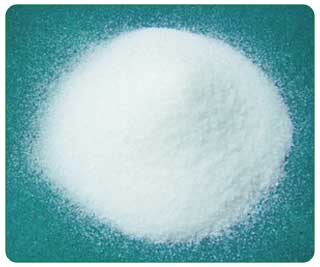
DMH is moderate in sweetness. It is 65-70% as sweet as sucrose and has a solution which is much less viscous than Liquid Glucose. DMH is freely soluble in water at room temperature and also in boiling alcohol.
The perceived sweetness can be increased to the level of sucrose in some Dextrose/Sucrose blends. Dextrose has a greater depression of freezing point than that of cane sugar, resulting in a smoother and creamier texture of the final products namely frozen food products. The bulk density of DMH is 0.65 to 0.70 kg/cc.
Chemically, DMH has reducing properties due to open chain aldehyde form which exists in equilibrium. In acidic solution, DMH yields condensation products such as maltose and gentibiose and in alkaline solution it isomerizes to fructose and its compounds. When oxidised with dilute alkali, DMH gives gluconic acid and with nitric acid it gives saccharide tartaric and oxallic acids. DMH on hydrogenation yields a mixture of glycols such as sorbitol.
DMH is a good source of commercial carbon-dioxide as it is 100% fermentable in nature. It is an important ingredient of microbial feed for the synthesis of antibiotics.
■ DMH is that form of carbohydrate which is of maximum use by a PHARMACIST. He uses it as an ingredient of Oral Rehydrate Solutions (ORS) of people suffering from diarrheoa, dehydration and heat stroke.
■ A DAIRY TECHNOLOGIST uses it in icecream as it increases the solids percentage without increasing the sweetness. Also, by virtue of freezing point depression, it gives a richertexture of icecream.
■ A BAKER used it as a yeast substrate for rapid fermentation and a better product with no deterioration of wheat starch due to prolonged fermentation.
■ A FOOD TECHNOLOGIST prefers it to canned sugar in the food preservation, x confectionery, meat products and jellies, as it does not overshadow the subtle flavour of these products by virtue of mild sweetness.
■ A CHEMICAL ENGINEER uses it as a raw material for several products such as sorbitol, citric acid, vitamins, gluconic acid and its derivatives, heptonates and polydextrose.
■ A MICROBIOLOGIST ferments it to make life-savers such as penicillin, streptomycin and rifampicin.